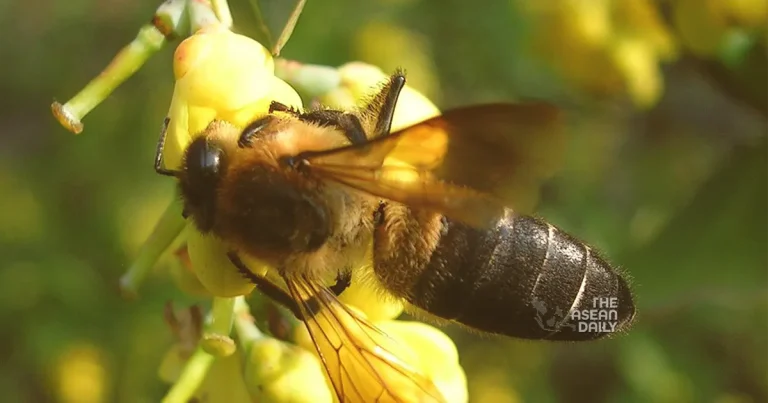20-4-2024 (BANGKOK) Thailand’s pristine ecological landscape has unveiled a remarkable secret: the presence of Himalayan giant honey bees, a species previously unseen in the country. This groundbreaking discovery, heralded by experts as a testament to Thailand’s exceptional biodiversity, was officially announced on Friday by the Department of National Parks, Wildlife, and Plant Conservation, in collaboration with researchers from Chulalongkorn University’s Faculty of Sciences.
Nestled within the breathtaking expanse of Doi Pha Hom Pok National Park, located in the province of Chiang Mai, this revelation emerged unexpectedly during a scientific expedition last May. The team of biologists, initially tracking the elusive Kaiser-I-Hind butterfly, stumbled upon a fascinating sight: a colony of bees exhibiting distinctive features. With abdomens cloaked in a deep black hue, golden fur adorning their thoraxes, and wings that bore a subdued lustre, these bees stood out as a remarkable find.
Three specimens were carefully procured by the research team for thorough examination, marking a pivotal moment in the documentation of this rare species. Nattapot Warrit, a dedicated researcher involved in the expedition, underscored the significance of this discovery. Drawing upon DNA analysis conducted subsequent to the initial sighting, he affirmed the presence of the Himalayan giant honey bee within Thai territory. This revelation corroborated a watershed moment in 2020 when the first photographic evidence of the species, captured within Thailand’s borders, surfaced on the iNaturalist website.
Historically confined to the frost-kissed domains spanning altitudes of 1,000 to over 4,500 metres above sea level, the Himalayan giant honey bee had been documented primarily in regions such as China, Nepal, India, Myanmar, and Vietnam. Its unprecedented appearance in Thailand underscores the nation’s suitability as a habitat for this enigmatic pollinator. Mr. Nattapot elaborated on the ecological significance of this find, emphasising the vital role played by these bees in fostering the proliferation of flora native to cooler climates.
Recognised colloquially as cave bees, owing to their predilection for nesting within cavernous alcoves, these creatures form colossal colonies comprising anywhere from 50,000 to 100,000 individuals. Such aggregations, prevalent within the recesses of caves, render the Himalayan giant honey bee one of the foremost honey producers on a global scale. Their symbiotic relationship with high-altitude vegetation underscores their indispensable role in facilitating the expansion of plant communities within mountainous landscapes.
Yet, amidst the jubilation sparked by this discovery, concerns loom regarding the looming spectre of climate change. Mr. Nattapot sounded a cautionary note, expressing apprehension over the potential repercussions of rising temperatures on the bee’s migratory patterns. While the species typically migrates to Thai territory between March and July, the viability of this annual pilgrimage hinges upon the preservation of sufficiently cold climates in mountainous regions.
Further exploration within Doi Pha Hom Pok National Park yielded three additional hives, prompting speculation regarding the potential presence of additional colonies within Chiang Mai’s broader national park network. Songkiat Tatiyanond, Deputy Chief of the Department of National Parks, Wildlife, and Plant Conservation, hailed this discovery as a testament to the department’s steadfast commitment to safeguarding Thailand’s ecological heritage.




